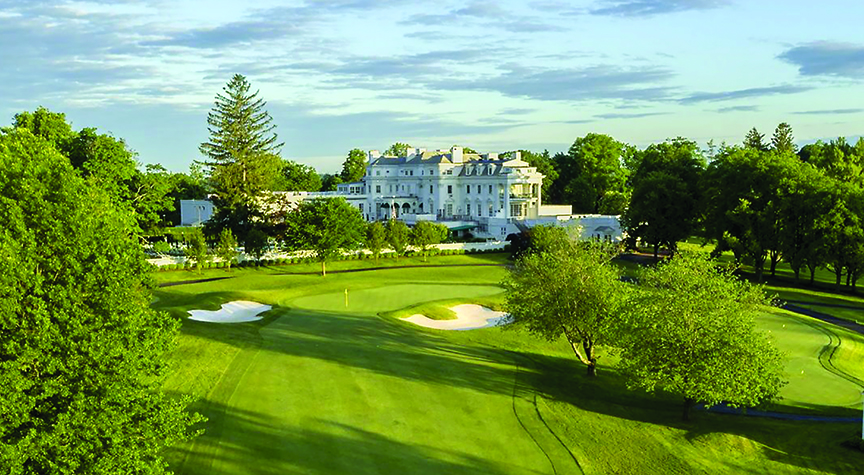
By David Moore
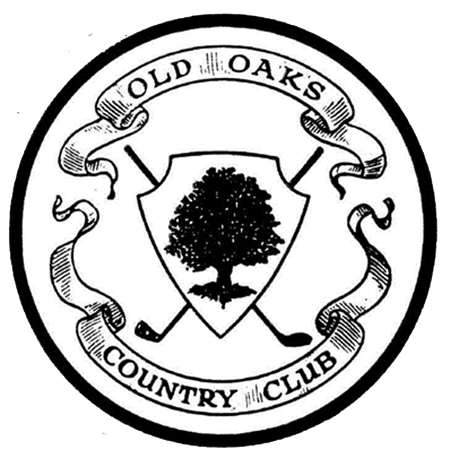 New York’s Westchester County is among the most golf rich counties in the nation. A short drive from New York City, the county is home to the likes of Winged Foot, Sleepy Hollow and St. Andrews Golf Club, which many consider the game’s original home in America. Situated in the town of Purchase, the Old Oaks Country Club is one of the leading clubs in the county, and our newest Heritage Club member of the Golf Heritage Society. This is their story.
New York’s Westchester County is among the most golf rich counties in the nation. A short drive from New York City, the county is home to the likes of Winged Foot, Sleepy Hollow and St. Andrews Golf Club, which many consider the game’s original home in America. Situated in the town of Purchase, the Old Oaks Country Club is one of the leading clubs in the county, and our newest Heritage Club member of the Golf Heritage Society. This is their story.
Old Oaks Country Club was initially born from one of Manhattan’s first Jewish clubs, the Progress Club (traditionally pronounced with a long “o”). Established in 1864, the Progress Club, which included some of New York’s wealthiest merchants and bankers, became one of the city’s elite social clubs.
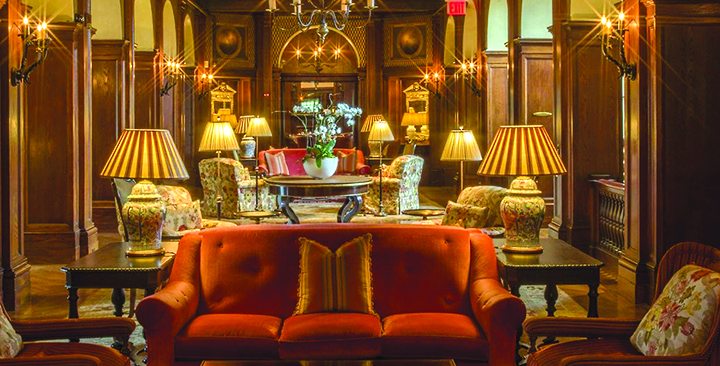
By the Roaring 20s, the Progress Club was looking to join other clubs across the country and introduce sporting opportunities, particularly golf, to its members. Landlocked in downtown Manhattan, the Progress Club purchased a 205-acre estate in Purchase, N.Y., owned by the widow of William A. Read for $600,000 (roughly $10.77 million in 2024). The estate’s 40-room mansion, known as Hill Crest, became the club’s permanent home in April 1925. The Progress Club in Manhattan dissolved during the Great Depression.
The Read property was originally owned by Trenor Luther Park (1861-1907). A Harvard graduate, Park was an attorney and vice president of the American Trading Company, a company founded by his father-in-law, former Connecticut Lieutenant Governor Julius Catlin. Construction of Hill Crest began in 1890 and was designed by the firm of Wood, Palmer and Hornbostel. The construction of the mansion took three years. The grounds were designed by Beatrix Cadwalader Jones Farrand in 1895.
In 1906, Park, an avid yachtsman, wishing to be nearer to the New York Yacht Club and the American Yacht Club in Rye, N.Y., sold Hill Crest to Read (1858-1916) for $1,000,000 (roughly $35 million in 2024). Read graduated from Harvard in 1880 and made his fortune in investment banking. His firm later became Dillon Read. In 1910, Read expanded the mansion to accommodate his large family and purchased several parcels of adjoining land. Read’s widow remained at Hill Crest until selling the estate to the Progress Club in 1925.
The initial meetings for the new Progress Country Club were held on June 11, 1925. Incorporation papers were submitted to the state that October. The Brooklyn Times Union reported that Max N. Natansan would oversee the creation of two golf courses as chairman of the golf committee and that the club had engaged a professional of national prominence to instruct members. It also applied to host a major amateur tournament.
A.W. Tillinghast, the designer of nearby Winged Foot and Quaker Ridge, was hired to design and build 27 holes. He completed a nine hole “West Course” that opened for play the following spring (1926) and began construction of an 18-hole “East Course” to open for the 1927 season. The nine-hole course was laid out around the clubhouse, while the 18-hole course would occupy the bottom portion of the property, bisected by Purchase Street. Tillinghast’s contract stated that he was to be paid $15,000 to design and build a 9-hole and 18-hole course, but should the 18-hole course cost more than $100,000, his fee would be cut to $12,500. On the first anniversary of his contract, he thanked the board of the Progress Country Club for their last payment, advised that the 18-hole course would cost more than $100,000 and resigned his commission.
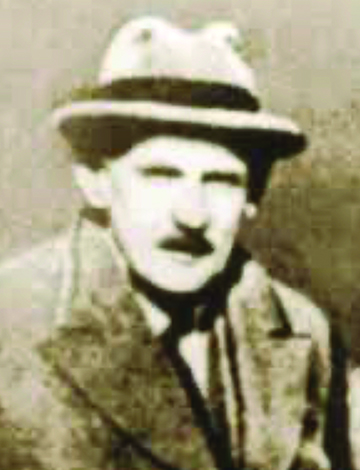
In his place, Charles Hugh Alison was hired to complete construction. Alison had just finished work at the Century Country Club, which he had designed and built. Century bordered the 9-hole West Course. Today, the clubs are separated by Interstate 684, which was built in the late 1960s on three of the West Course’s holes. Alison built the course using Tillinghast’s routing plan.
Alison was born in Preston, Lancashire, England in 1882. An Oxford educated man, he worked as a journalist before serving as secretary of Stoke Poges Golf Club outside London. There, he became associated with Harry S. Colt, who was designing the Stoke Poges golf course in 1908. He helped Colt complete the course and shortly after joined Colt in designing courses across England. After serving in World War I, Alison came to America to set up Colt’s base of operations in the United States. He would ultimately design over 20 courses during his decade in America.
The nine-hole West Course, largely completed by Tillinghast, opened for play in 1926. This course, which played around the clubhouse in a horseshoe shape, served primarily as the women and children’s course, except for the cold, wet months when the men would use it to get a quick round in. Today, the West Course is no longer. Portions of the course were lost when the New York State Highway Authority reclaimed several acres for the construction of Interstate 684 in the 1960s. Its two original closing holes are today the site of the club’s driving range and practice facility, and another two former holes are occupied by an organic farm operating under the auspices of the Old Oaks Charitable Foundation. The bulk of its produce is donated to local food banks whose members buy farm shares. The club’s kitchen is supplied with fruits and vegetables from the farm.
The 18-hole East Course opened in 1927 and, like the West Course, features much of Tillinghast’s original layout and characteristics. With the West Course gone, the 18 holes of the East Course constitute the golf course today. Several renovations have occurred over the years, with Ken Dye and Rees Jones the most notable in the last quarter century. It has been a part of Golf Digest’s “Best in State” rankings since 2015, currently ranked the 38th best course in the state of New York. From the back tees, the course plays at 6,848 yards and a par 70. The member tees are at 6,421 yards.
The early Old Oaks membership had deep ties to the entertainment industry. Among these members were Albert and Harry Warner, founders of Warner Bros. Pictures Inc. Moe Gale was a leader of the William Morris Talent Agency, which helped promote countless musicians, such as Ella Fitzgerald, Count Basie, and the Four Ink Spots. He also owned the famous Savoy Ballroom in Harlem, where musicians such as Duke Ellington, Benny Goodman, and Glenn Miller often played. Singer/actress Ethel Merman made her first public appearance at the club in 1928. She later became a Tony, Golden Globe, and Grammy Award winner. In more recent years, Abraham “Glenn” Osser was a member at the club, known for being the long-time musical director for the Miss America Pageant.
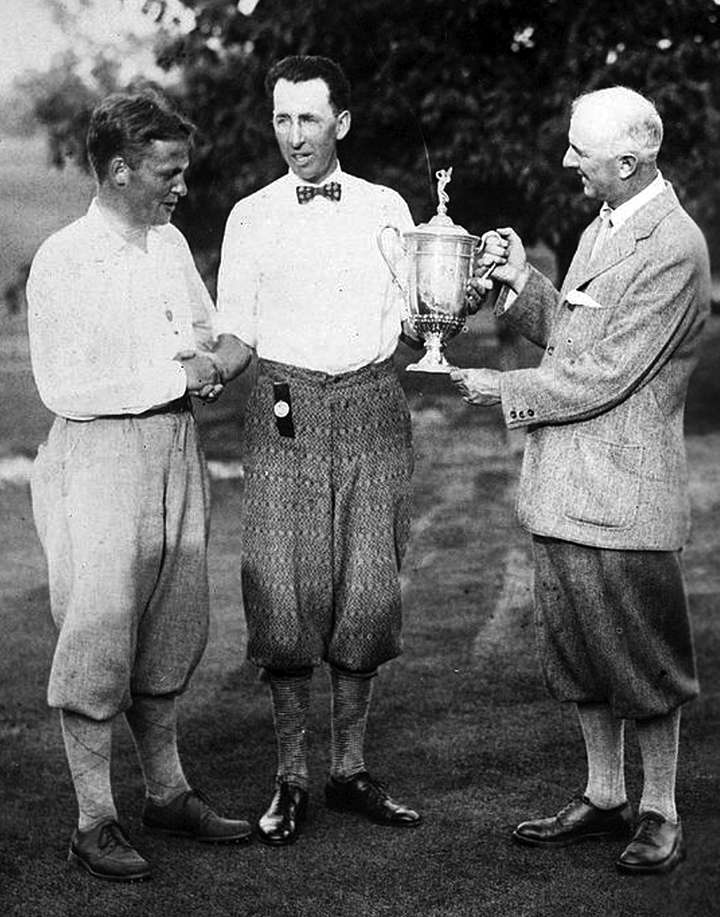
The Roaring 20s went out with a bang when Black Tuesday hit, and the Great Depression ensued. During this era, the club underwent several name changes and a merger. The first name change was in 1929 when it became the Purchase Country Club. In 1932, it became the Pine Ridge Country Club for a brief period, before reverting back to the Purchase CC in 1934.
In 1935, the club merged with nearby Oak Ridge Country Club, which had been struggling during the Depression, to form Old Oaks Country Club. Oak Ridge was established in 1916 and once had more than 500 members. Their club site became another country club for a brief period after the merger, but ultimately shut down in 1940. After World War II, the former Oak Ridge clubhouse became the townhall for Eastchester, N.Y. The move also saw Oak Ridge’s professional, 1925 U.S. Open champion Willie Macfarland, become the first professional at the newly combined club (more on him and the other professional shortly).
Like many other clubs, Old Oaks joined the fight when the United States entered the Second World War. In 1942, the board authorized the sale of several oak trees to a timber company that was helping supply wood for naval vessels. In the 1943 board minutes, it was noted that more than 30 members had resigned their membership to enter the Armed Forces. Over the course of the war, several USO and War Bond events were held at the club. In 1954, nearly a decade after the Allied victory, the first chairman of the Joint Chiefs of Staff, General Omar Bradley, was given the first honorary membership ever bestowed by the club.
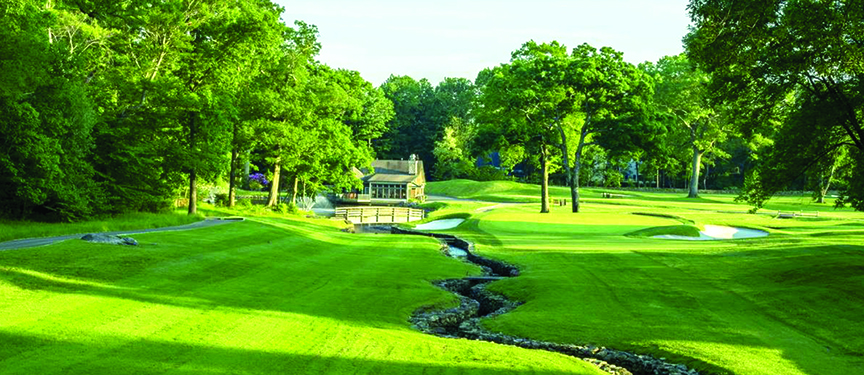
Old Oaks and Championship Golf
Dating back to its days as the Progress Country Club, Old Oaks has had a long-standing relationship with the Metropolitan Golf Association (MGA), which was established in 1897. Old Oaks was accepted as an MGA member in the spring of 1927. In 1984, the MGA brought the historic Metropolitan Open to Old Oaks. The event was won by Staten Island native Jim Albus, who served as the professional at La Tourette and Piping Rock Club. He played on the PGA Tour Champions for several seasons, winning six times, including a major at the 1991 Senior Players Championship.
The MET (Metropolitan) section of the PGA of America has conducted several championships on the Old Oaks course. The first was in 1989 when Mel Baum won the first of back-to-back titles. In 2011, Fresh Meadow professional Danny Balin, who had been an assistant at Old Oaks, won the first of three consecutive MET PGA Championships at Old Oaks, beating Frank Bensel of the neighboring Century Country Club by two shots. It proved to be the first of five consecutive runner-up finishes for Bensel in the MET PGA, who finally reclaimed the title in 2017 (he had previously won in 2009).
Nearly every other year since 1963, Old Oaks and neighboring Century CC have co-hosted U.S. Open Sectional Qualifying. That inaugural year, major champions Sam Snead, Lionel Herbert, and eventual 1963 U.S. Open champion Julius Boros qualified for the Open at the two clubs. In 1987 qualifying, PGA and European Tour winner Barry Jaeckel set the Old Oaks’ course record, firing a seven-under 63. Sectional Qualifying was last hosted at the two clubs in 2022, with up-and-coming PGA Tour players (then amateurs) Chris Gotterup and Michael Thorbjornsen among the noteworthy qualifiers, while former U.S. Amateur champion Ricky Barnes and three-time PGA Tour winner Johnson Wagner were among those who failed to qualify.
Marathon Golf
Old Oaks is believed to be the site of one of the earliest recorded instances of “marathon” golf in America. Member Leo DeKorn, a four-sport letterman at the University of Pennsylvania and New York attorney, set a record on June 27, 1930, when he played eight rounds of golf over the course of the day. The Daily Item reported that he completed the feat in 11 hours and 35 minutes, walking all 144 holes, using five caddies, in 1,925 strokes. He averaged about 90 minutes and roughly 107 strokes per round. When his record was broken later that summer, he made another attempt. This time, he teed off at 3:30 a.m. and proceeded to complete 200 holes in 15 hours, losing seven pounds in the process according to The Buffalo Times. He averaged 97 shots per round and a pedometer he carried counted 52 miles walked.
DeKorn decided to attempt 300 holes in a 24-hour period in June 1931. He began at 6 p.m. on Sunday, June 21, and played through the night, aided by flashlights and headlights from the members’ automobiles. According to the White Plains Reporter Dispatch, DeKorn completed 13 rounds in 18 hours before blisters forced him to discontinue his quest for 300 holes in 24 hours. Nine caddies were used to complete the rounds.
A Strong Professional Lineage
Old Oaks Country Club has one of the finest lineages of golf professionals of any club in the area. It started with the forming of the club in 1925 and the hiring of “Wild” Bill Melhorn. The Illinois native won 19 times on the PGA Tour, including the 1924 Western Open. He was a member of the first American Ryder Cup team in 1927 and was in the field for the inaugural Masters Tournament in 1934. Melhorn only stayed one year before Bobby Cruickshank was hired.
A native of Grantown-on-Spey, Scotland, Cruickshank turned professional and immigrated to the United States on the suggestion of his mentor, three-time major champion Tommy Armour. He immediately made a name for himself, reaching the semifinals in back-to-back PGA Championships (1922-23) and finishing runner-up to Bobby Jones at the 1923 U.S. Open at Inwood Country Club. Though he never won a major championship, Cruickshank was a 17-time PGA Tour winner, including wins at the North and South Open in Pinehurst (1926-1927) and the Los Angeles Open (1927). For many years, Cruickshank held the Old Oaks course record of 64, only matched by multi-club champion Elliott Simpson before Barry Jaeckel broke it in 1987 U.S. Open qualifying.
As previously mentioned, Willie MacFarland became the club’s professional after the merger with Oak Ridge in 1936. By that point, Macfarland was an established star, having won 21 PGA Tour events and outdueling Bobby Jones to win the 1925 U.S. Open at Worcester Country Club in Massachusetts. Among his other wins were two Metropolitan Opens (1930, 1933), two Shawnee Opens (1925, 1928) and the 1934 Pennsylvania Open at Oakmont. He remained with Old Oaks until the start of World War II.
Over the next four decades, a handful of professionals served the Old Oaks membership. Following Macfarland were his assistants Jimmy Dugan and Dan Mackie. Mackie came over from Century Country Club, leaving his assistant Ben Hogan behind. Dugan and Mackie served as co-head professionals and were followed for a year by Ben Roman. Allen Senior Jr. took over in 1974 and remained at Old Oaks until 1983.
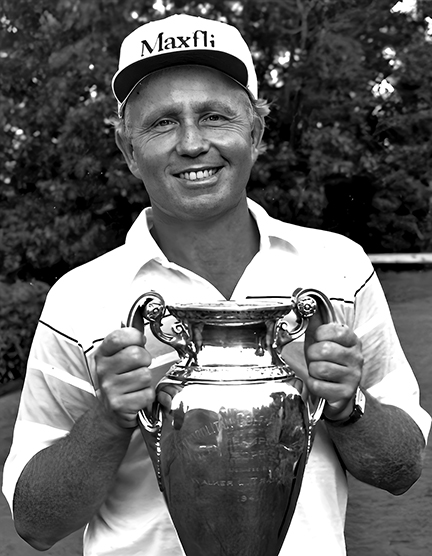
In 1983, former PGA Tour player Bobby Heins took the job and embarked on a 30-plus year career at Old Oaks. During his tenure, he played in two U.S. Opens, three PGA Championships and four Senior PGA Championships. Locally, he was a force in the MGA, winning back-to-back Metropolitan Opens in 1988 and 1989 at Baltusrol and Bethpage Black respectively, as well as back-to-back MGA Senior Opens (2008-09). The MET PGA Section has recognized him on numerous occasions as well, including their Professional of the Year Award (2000), Teacher of the Year Award (2008), Player of the Year Award (1983, 1990), Senior Player of the Year Award (2001-03, 2006-07, 2009) and the Bill Strausbaugh Award (1997-98, 2002). Heins retired in 2016.
Nick Maselli took over for Heins, after first coming to Old Oaks as Heins’ assistant in 2001. Maselli, once the captain of the Villanova University golf team, was responsible for envisioning and converting the old maintenance barn into an indoor practice facility with three hitting bays and high-tech swing analysis equipment. Nick has a staff of excellent assistants working with him to provide lessons and run youth clinics.
Amongst the teaching professionals at Old Oak is Patrick Eggeling who was named “Teacher of the Year” by Golf Digest in 2011. He was also voted by his peers as “PGA Metropolitan Section Teacher of the Year” in 2005. Pat has been at Old Oaks since 1990.
Today, Old Oaks Country Club remains one of the underrated gems in the New York metropolitan area. Their membership is proud of the legacy of their club, course and lineage of professionals. In 2025, the club will celebrate its centennial year and they hope it is just the first of many milestones to come. They are proud to be among the first GHS Heritage Club members, as several Old Oaks members have been long-time supporters of the Society.
